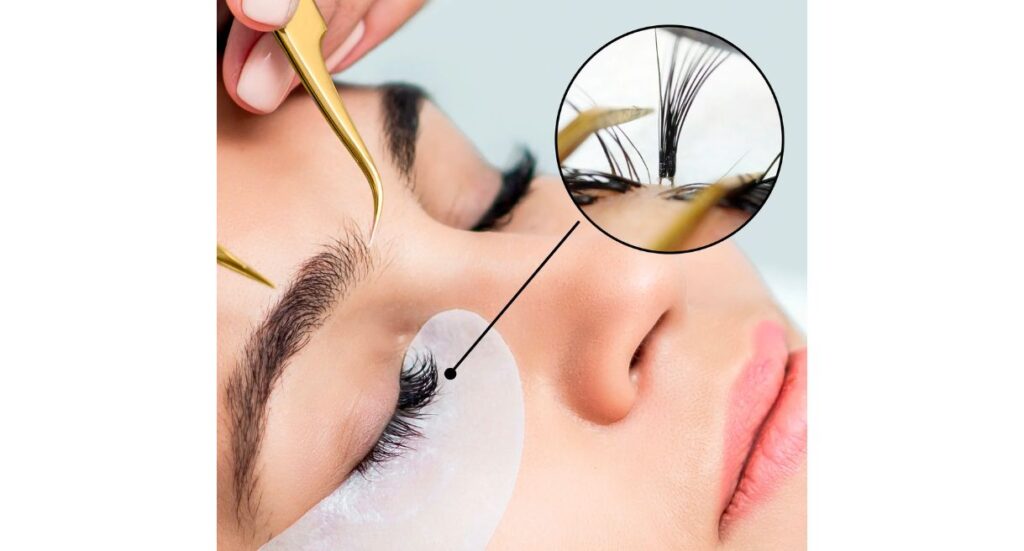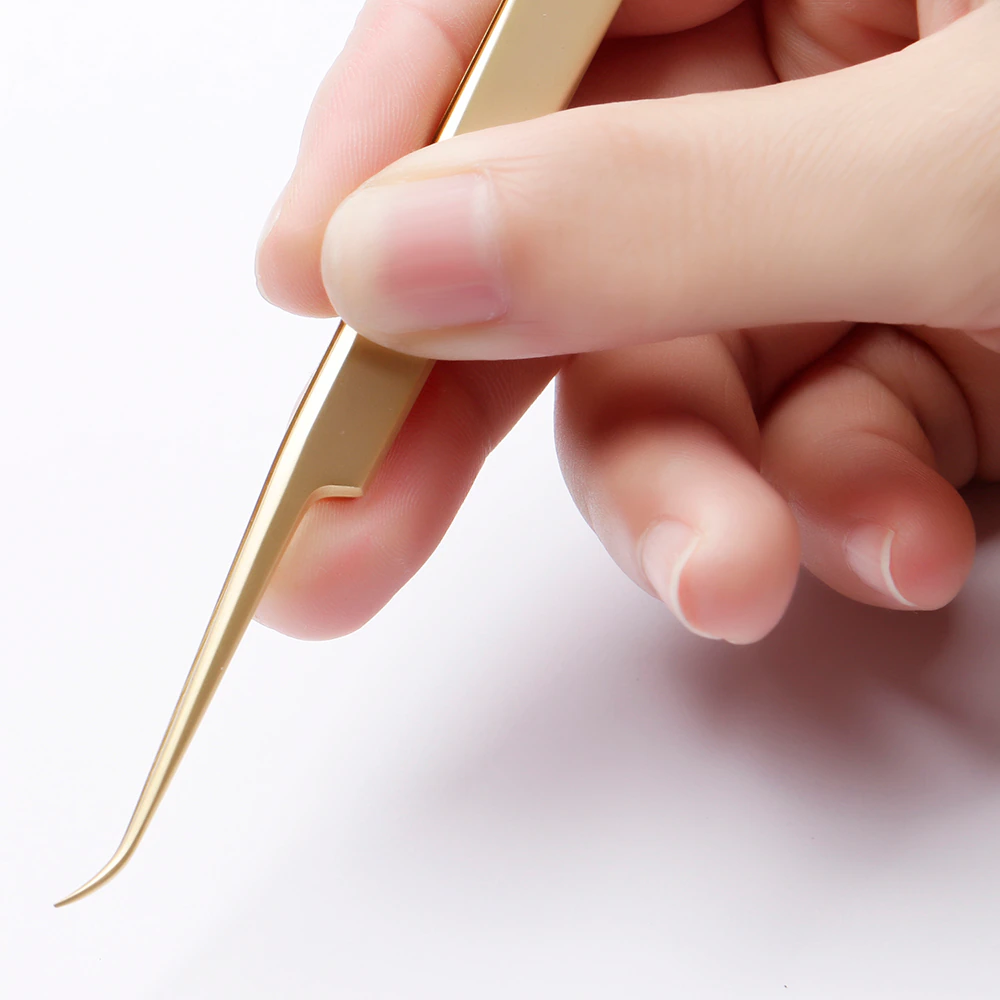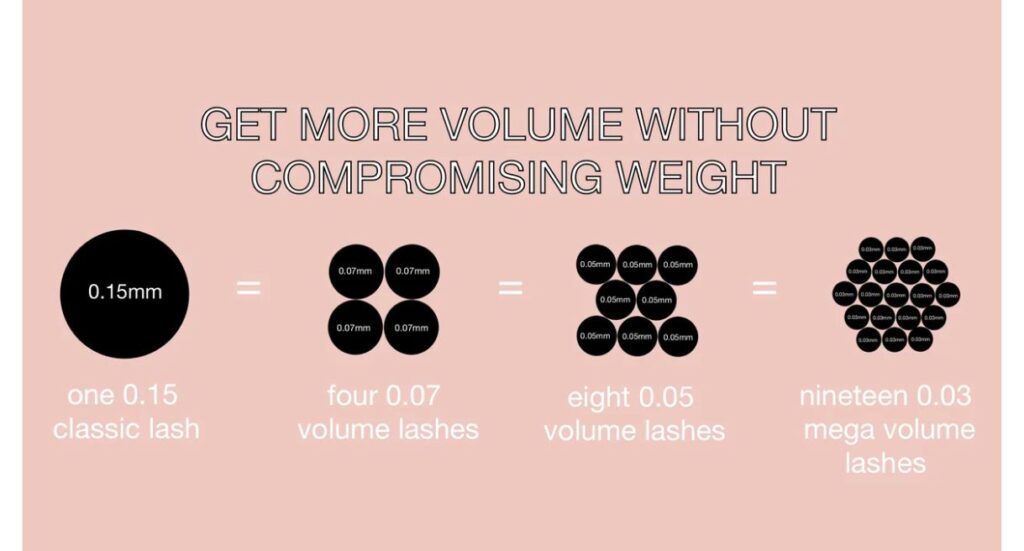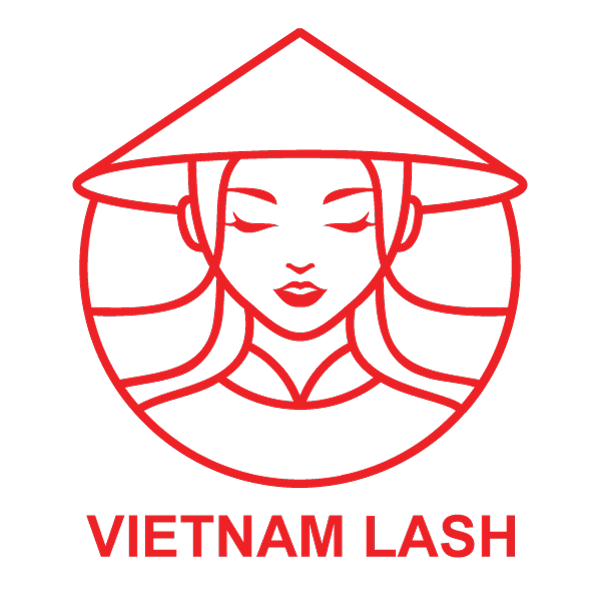Lash extensions have become increasingly popular in recent years, offering individuals the opportunity to enhance their natural lashes for a fuller, more glamorous look. However, like any beauty procedure, lash extensions come with their own set of challenges for technicians. From technical difficulties to client expectations, navigating these challenges requires skill, patience, and expertise. In this article, we’ll explore some common challenges techs face when doing lash extensions and provide survival tips to overcome them.
16 Challenges Techs Face When Doing Lash Extensions
1. Lashes Stick Together
Lashes sticking together is the most popular problem when first learning lash extensions. This is caused by the eyelash extensions not being isolated properly. If you do that for a long time, the natural lashes will be seriously damaged.

The lashes have different lengths due to various stages of growth. Some lashes are growing, while others are falling. Appropriate isolation allows the lashes to develop naturally. If you add lash extensions improperly, you will gather lashes of different lengths together, and your clients will have itchiness and pain in the lash line. In the long run, this can destroy the lash follicle and make your customers lose natural lashes permanently.
However, there are 3 ways to save you from this disaster. To isolate the lashes correctly, you should spend 10 minutes at the end of the application process to check if you did this appropriately and thoroughly.
The second way is to work in layers. The natural lashes consist of 2-3 layers. For people with a lot of hair, there are up to 5 layers. You can divide lashes into one layer at a time with the help of taping.
The last way is to use an isolation tweezer to check for stickies. It allows you to inspect individual lashes from root to tip. You should grip and up-grip delicately to avoid hurting the lashes. Don’t forget to check baby lashes to ensure they are not stuck somewhere.
Tip: A tip for you is to apply 4-6 lashes or fans to one eye. You should start from one corner of the eye to the other and repeat on the opposite eye. This process will give the glue enough time to dry.
>> Unlock the secrets of lash layers! Say bye to lash woes! Learn more here: What Are Lash Layers? Click In For Layering Extensions!
2. The Tools Are Not Sanitized Carefully
The eyes are vulnerable and easy to infect if you don’t sanitize tools and equipment carefully. There are many cases relating to this hygiene problem, such as people getting conjunctivitis after wearing eyelash extensions.
Tip: The best way to protect your clients from this is to boil all tools, including lash cleansing brushes, tweezers, and lash wands. Then, you can run them through a sterilization machine. Everything near the eyes needs to be completely sterilized. Don’t forget to wash your hands carefully as well.
3. The Shakes
You might feel confident and ready to start your lash career after finishing your lash courses. However, working on in-person lashes is a different story compared to your practice on models. It takes new lash artists hours to complete an eyelash extension set. Hence, your hands will be unsteady due to holding tweezers for a long time. This can lead to some problems when you are trying to separate lashes.
Isolation lashes are a crucial step; if they are not done, you cannot proceed further. We have a few tips for you to help you maintain your steady hand. You can rest it lightly on your client’s forehead. Don’t worry, a gentle touch will not make them mad at you. The tips of the tweezers will rest gently on the under-eye pads to provide you with stability and support.
You can try various tweezers to find the most suitable tweezers for your customers. Last but not least, don’t try to grip the tweezers too tightly, you should keep your hands relaxed, and a light touch is enough to hold them.
>> Lash Tech 101: How to Hold Tweezers for Eyelash Extensions

4. Makeup on Lashes
Makeup residue, particularly from products like mascara and eyeliner, can linger on the natural lashes despite attempts at removal. This residue not only makes it harder for the adhesive to bond properly with the natural lashes but can also create a barrier between the extension and the natural lash, leading to premature shedding of the extensions.
In addition, heavy makeup, particularly mascara, can obscure the true condition of the natural lashes, making it challenging for technicians to assess their length, thickness, and overall health accurately. Without a clear understanding of the client’s natural lashes, technicians may struggle to select the appropriate length and weight of lash extensions, potentially leading to dissatisfaction with the final result. Encouraging clients to come to their appointment with clean, makeup-free lashes can help alleviate this issue.
Tip: Educate your clients about the importance of arriving with clean, makeup-free lashes. Provide them with specific instructions on how to properly remove makeup from their eyes, emphasizing the need for thorough cleansing to ensure no residue remains. Prior to starting the lash extension procedure, thoroughly cleanse the client’s natural lashes using a gentle, oil-free makeup remover. Pay close attention to areas where makeup tends to accumulate, such as the lash line and outer corners of the eyes.
5. Eyelash Extensions Are Too Long
All people wish to have long lashes, so they would like to wear long eyelash extensions. We deeply understand this desire, but keeping the natural lashes safe and comfortable is an important mission. You have to balance the client’s demands and her lash condition.
If you extend too much length, the original lashes cannot bear the extensions in place easily. A lot of pressure will be put on the strains and will cause damage to the natural lashes. The long eyelash extensions can rub the skin above the eyes, along the socket area, or along the brow bone, which makes the eyes red, swollen, or itchy because of irritation.
Tip: To avoid that, you should apply the lash extensions, which equal nearly 3/2 of the original lashes. That means if the natural ones are 8mm, the recommended length is 11mm. The natural lashes should cover at least 1 to ⅔ lengths of extensions. Choosing the right lengths will make your client’s lifestyle easier, such as when wearing glasses.
6. The Weight Of Extensions Are Improper
Many lash techs believe that a beautiful lash extension set is an extreme lash set. But it’s wrong. If the client wears heavy lash extensions, she will feel uncomfortable, and her look is unnatural. To maintain thick lashes, you need to use a lot of adhesive, which hurts your clients. When the eyes get pressed a bit by your pillow, these lash extensions will dig into their eyelids and have a huge impact on sleep quality.
Tip: If you choose the proper lash extension weight with the right application technique and aftercare, the extensions can last for up to 6 weeks. Hence, you need to consult them to opt for the appropriate weight that is safe for their eye health. You can suggest clients buy a lash wand brush to save their lashes from clumping and apply lash-care products simply.

7. Pick The Wrong Glue
There are hundreds of adhesive brands out there, and it is tough to pick the best one. If you choose glue that dries too slowly, the lashes will stick together. Besides, you and your clients have to be exposed to glue fumes for a long time, and lash placement is not straightforward.
On the other hand, if the glue dries too fast, it will lead to complicated issues. The replacement and attachment process will not take place smoothly. You have to pour glue many times due to the quick drying of glue droplets.
Tip: To save you from promising descriptions, you should understand your environment and demands. Then, read as many blog posts as possible to look for the best adhesive.
>> How to Choose The Best Lash Extensions Glue?
8. Too Much/ Too Little Glue
Applying too much glue to lash extensions will make a look bad. This also leads to the lashes sticking together, creating tension between the lashes, and causing the original lashes to withdraw prematurely. Therefore, the lash extensions cannot stay long on the eyes, and the natural lashes will disappear. Moreover, it can increase the risk of irritation since the adhesive takes more time to dry.
On the contrary, using too little glue will make lash extensions fall out quickly.
Tip: Do not swipe the lash into the adhesive, this just creates a film of glue, which is not enough to stick to the original lashes properly since the glue will dry before that. You should dip 2mm of extensions into the glue at a 90-degree angle in the middle of the glue drop for a while, then slowly slide out to get the tiniest ball of adhesive on the lash. If you get too much adhesive, you can scoop steadily to adjust the correct amount of adhesive. Never wipe on gel pads or glue palettes.
9. Attach Extensions to the Skin
Attaching lash extensions to the skin is the worst thing a lash artist can do. The outcome is really dangerous. If the adhesive can block the lash follicles, then the lash growth will be infected and damaged for the long term, even creating bald spots in the lash line. The glue can make your clients face allergic reactions: redness, puffiness, itching, and blurred vision.
Tip: How about attaching extensions too far from the eyelid? It will make your clients look messy and cause the lash extensions to twist. Remember to apply the lash extensions 0.5mm to 1mm away from the skin to ensure your customers’ looks are safe and beautiful.
>> Let’s Perfect Eyelash Extension Placement with These Tips
10. Temperature Problems
As we mentioned, your own environment can decide which glue you use. The humidity can change the drying speed and viscosity of the adhesive. Instead of investing in a pricey automated system to control the room temperature and humidity, we have tips to help the adhesive and extensions stay on the eyes longer.
Tip: You should give the glue bottle vigorous shakes for 2 minutes before your first appointment of the day. Between each treatment, you should also shake it for 10 seconds. On hot days, you should dip the lashes into glue longer than normal and make sure the lashes will not gather together.
On high-humidity days, you should try to get more adhesive and just swipe the extensions on the glue to slow down the curing time. Moreover, you need to keep the glue bottle away from direct sunlight. You can store it in a bag and place it in the darkest, coolest area.
11. Eye Irritation
Eye irritation can be caused by many factors: eyelash extensions, poor techniques, or placing under eye patches improperly. If you position the eye pads too close to the waterline, the eyes will have redness or swelling. This symptom is usually mistaken for irritation. Besides, if you attach several lashes too close to the skin, this can lead to eye swelling or irritation.
Tip: To avoid these situations, you should not place the eye pads away from the waterline. Checking the lashes carefully to ensure there is no lash residue on the skin will protect your customers from irritation. For some sensitive clients, it is good to attach 1 or 2 extensions to the original lashes as a sensitive test. If, after 24 hours, the clients are comfortable and have no irritation, you can proceed further, and vice versa.
12. Roaming Eyes
During the eyelash extension application and lifting process, some customers love chatting with lash artists, hence, their iris also moves around underneath the lid. In this case, it is difficult for you to work with sharp tweezers and isolate lashes.
Tip: To avoid this situation, you can create a relaxing playlist for the lash processes, then customers can lie back, enjoy the music, and take a lash nap. For the best result, you can suggest to them not to drink too much coffee before the treatment.
13. Place Under-Eye Pads
Don’t underestimate the importance of placing under eye pads correctly. If you don’t position the under-eye pads properly, this can lead to numerous problems. Your customers will feel uncomfortable, even creating bruising and a chemical burn on the eyes when the eye pads are exposed to the waterline too closely. This will also elevate the inner corner and make you calculate the wrong distance. The outcome is that your look will be messy when clients open their eyes.
Tip: But don’t be afraid of putting under-eye patches, we always have solutions for your problems. You should place the pads at least 1-2mm under the bottom waterline. To eliminate air pockets between the pads and the skin since the pads don’t fit the face shape, you can cut the bottom of the patches a bit before positioning them.
You can prepare a lot of pads to ensure they can embrace the face contours. Don’t hesitate to invest in high-quality patches that hold the lashes well. Choose pads without too many added ingredients to reduce the risk of irritation.
We suggest you use extra-sensitive patches, they are more flexible and comfortable for clients to wear. They will help you avoid lifting the inner corners up. Remember to start from the inner corners and then move towards the outer corners when placing pads on the eyes.
Read more: How To Apply Under Eye Patches – Tips To Protect The Eyes Correctly
14. Take Too Much Time To Isolate The Perfect Lashes
Isolating lashes is a step that takes the most time since everyone wants to have perfect lashes. But keep in mind that your priority is to add an eyelash extension to every individual natural lash.
Tip: You can try to isolate lashes vertically instead of horizontally, and vice versa.
If the baby natural lashes bother you, you can add 0.07mm thin lash extensions to the tiny natural lashes, your vision will be clearer and more controllable. The other way is that you should work on baby lashes before working on the longer ones.
Read more: How To Improve Your Lash Isolation Skills In A Short Time – Never Miss Tips And Tricks
15. Not Using Lash Mapping
No matter if you are an experienced lash artist or a beginner, you need to use a lash map. Symmetry is the key to a successful lash extension set. If you don’t use a lash map, it is really difficult for you to remember where the lashes you used are. A lash map allows you to work layer by layer, hence, you will know exactly where you need to add longer lashes or shorter lashes.
Moreover, this step also helps you determine the perfect style for your customers.
Tip: To create a lash map, you have to check their eye shape, face shape, eye angle, and eye spacing. You should start mapping with opened eyes instead of closed eyes since it is extremely tricky to know where the iris is. Use a brow pencil or an eyeliner to mark the middle of the eye (the iris) on the eyelid.
16. Bad Lash Direction
You need to know the 2 kinds of lash directions: the base direction and the tip direction. The first type is usually called “sunrise.” You can remember which direction the lash should always go easily. The inner and outer corner lashes should go outward instead of straight. On the other hand, you should pay extra attention to the tips. If you fan the lash extensions out excellently but forget the tips of the extensions, the overall look will be messy. You even have to be more careful when working on the curlier extensions.
Tip: A tip for you is to use a small mirror to examine the directions of the tips of extensions entirely to have a perfect look.
Conclusion
Mastering lash extensions requires diligence, precision, and attention to detail. By addressing common challenges and implementing effective techniques, technicians can elevate their skills and deliver exceptional results. Continual learning and adaptation are key to staying ahead in this dynamic field.
We trust these insights will prove valuable in your journey towards flawless lash extensions. For further guidance and support, don’t hesitate to reach out. Your pursuit of perfection in lash artistry is our shared mission.
Visit our website for the latest updates and resources: https://vietnamlash.com/

 +84 862 765 053
+84 862 765 053